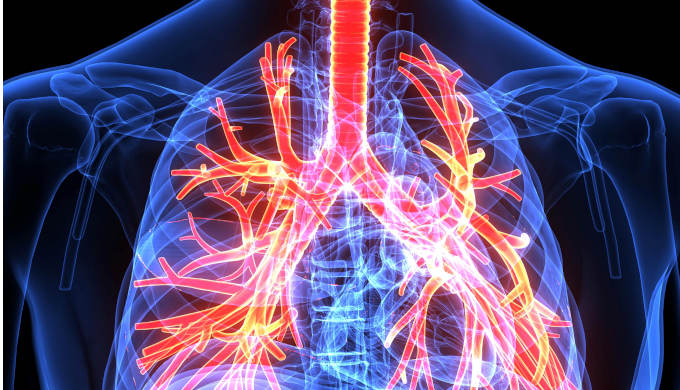Author: Claire Barnard
medwireNews: The Janus kinase (JAK) inhibitor tofacitinib is associated with numerically higher rates of major adverse cardiovascular events (MACE) and malignancy than tumor necrosis factor (TNF) inhibitors in people with rheumatoid arthritis (RA) at high cardiovascular (CV) risk, show the ORAL Surveillance results.
Five presentations at the ACR Convergence 2021 virtual meeting covered results from the phase 3b/4 postmarketing safety study, which was mandated by the US FDA and carried out between 2014 and 2020.
The trial involved 4362 patients with moderate-to-severe RA despite methotrexate treatment who were randomly assigned to receive tofacitinib 5 mg or 10 mg twice daily or a TNF inhibitor (adalimumab in North America, etanercept in other locations) in addition to methotrexate. Participants in the tofacitinib 10 mg group were reallocated to the lower dose in 2019 after the Data Safety Monitoring Board warned of an increased risk for pulmonary embolism (PE) and mortality with the higher dose. All participants were aged 50 years or older, had at least one additional CV risk factor, and were followed up for a minimum of 3 years.
Primary data
Outlining the primary results in a poster presentation, Roy Fleischmann (University of Texas Southwestern Medical Center, Dallas, USA) reported that incidence rates (IRs) of MACE – defined as CV death, nonfatal myocardial infarction, or nonfatal stroke – per 100 person–years were 0.91 for patients given tofacitinib 5 mg twice daily, 1.05 for those given tofacitinib 10 mg twice daily, and 0.73 for those on a TNF inhibitor. The respective IRs for malignancies excluding nonmelanoma skin cancer (NMSC) were 1.13, 1.13, and 0.77.
The hazard ratios (HRs) for MACE and malignancy with any dose of tofacitinib versus TNF inhibitors were 1.33 and 1.48, respectively, and the upper limit of the 95% confidence interval was more than 1.80 in both cases, meaning that the noninferiority criteria were not met.
Fleischmann said that the number of person–years of exposure needed for one more MACE event relative to TNF inhibitors was 567 for tofacitinib 5 mg and 319 for tofacitinib 10 mg. The corresponding numbers for malignancies were 276 and 275 person–years.
Baseline risk factors for MACE and malignancy
Additional risk factors for MACE in ORAL Surveillance were explored further in a study presented by Christina Charles-Schoeman (University of California, Los Angeles, USA). The researchers conducted a multivariate analysis, finding that current smoking (HR=2.18), aspirin use (HR=2.11), age 65 years or older (HR=1.81), and male sex (HR=1.81) were all significant independent risk factors for MACE irrespective of treatment assignment.
Charles-Schoeman reported that the numerical associations seen between tofacitinib use and MACE risk tended to be higher in patients with these risk factors than in those without. For instance, in people aged 65 years and older who had ever smoked, the HRs for MACE with tofacitinib 5 mg and 10 mg versus a TNF inhibitor were 1.33 and 1.50, respectively, but decreased to a corresponding 0.87 and 1.10 for younger patients who had never smoked.
When the components of MACE were analyzed separately, similar findings were seen for the outcome of myocardial infarction, but the associations were “less apparent” for stroke, she said.
“Overall, these data emphasize the importance of assessing baseline CV risk when treating patients with RA,” concluded Charles-Schoeman.
In another presentation, Jeffrey Curtis (University of Alabama at Birmingham, USA) provided more details on the malignancies (excluding NMSC) occurring in ORAL Surveillance and discussed the baseline risk factors. He reported that lung cancer was the most frequent malignancy among tofacitinib-treated patients, with an IR per 100 person–years of 0.23 in the 5 mg group, 0.32 in the 10 mg group, and 0.13 in the TNF inhibitor arm.
In a multivariate analysis, older age and smoking (both current and past) were identified as significant risk factors for malignancies. Curtis said that the HRs for malignancy with tofacitinib versus TNF inhibitors tended to be higher in people with these risk factors. When both factors were combined, the HR for malignancy for any dose of tofacitinib versus a TNF inhibitor was a significant 1.55 for people aged at least 65 years who had ever smoked, but a nonsignificant 1.16 for younger never-smokers.
Curtis posed the question: “Are there people that you should worry about more and people you should worry about less?” He said that the risk differences “are quite trivial” for people who have never smoked, but “I would probably have greater caution” for somebody with a long history of smoking. He noted that “the generalizability of this trial needs to be considered” when applying the results to everyday practice, given that the ORAL Surveillance population “is not an all-comers RA population [but] older higher risk individuals.”
Infection and VTE risk
The final two presentations on ORAL Surveillance reported on two of the secondary outcomes of the trial, namely infection and venous thromboembolism (VTE) risk.
In the infection study, presented as a poster, Andra Bălănescu (“Sf Maria” Hospital, Bucharest, Romania) and colleagues found that the risk for overall infections excluding herpes zoster was significantly higher in patients treated with tofacitinib 5 mg or 10 mg versus a TNF inhibitor, at HRs of 1.16 and 1.31, respectively. The risk for herpes zoster was also significantly increased with both doses of the JAK inhibitor, at corresponding HRs of 3.28 and 3.39, while serious infection risk was significantly elevated with the higher dose only (HR=1.48).
In accordance with the observations for MACE and malignancy, Bălănescu said that infection risk was “generally higher” in people aged at least 65 years relative to younger participants.
The VTE analysis was described by Charles-Schoeman in an oral presentation. She reported that IRs for VTE per 100 person–years were significantly higher among patients treated with tofacitinib 10 mg versus a TNF inhibitor (0.7 vs 0.2) but not among patients treated with tofacitinib 5 mg versus a TNF inhibitor (0.3 vs 0.2).
A similar pattern of results was seen for PE, with significantly higher IRs per 100 person–years for tofacitinib 10 mg versus TNF inhibitors (0.5 vs 0.1), but not for tofacitinib 5 mg versus TNF inhibitors (0.2 vs 0.1).
“These results are consistent with the findings of the ad-hoc safety analysis done in 2019, which resulted in the dose reduction from the 10 to the 5 mg dose,” said Charles-Schoeman.
She also reported the results of a multivariate analysis, which found that male sex, age of 65 years or older, obesity, history of hypertension or VTE, and baseline use of hormonal drugs, corticosteroids, or antidepressants were all significant independent risk factors for PE.
When asked about the application of these findings in clinical practice, Charles-Schoeman stressed that when talking to patients it is “very important” to discuss risk factors for adverse events such as VTE as well as talking about treatment choices for RA.
medwireNews is an independent medical news service provided by Springer Healthcare Ltd. © 2021 Springer Healthcare Ltd, part of the Springer Nature Group
This information is brought to you by medwireNews and is not sponsored by, nor a part of, the American College of Rheumatology.
ACR Convergence 2021; 3–9 November (abstract 0831)
ACR Convergence 2021; 3–9 November (abstract 0958)
ACR Convergence 2021; 3–9 November (abstract 1940)
ACR Convergence 2021; 3–9 November (abstract 1684)
ACR Convergence 2021; 3–9 November (abstract 1941)









